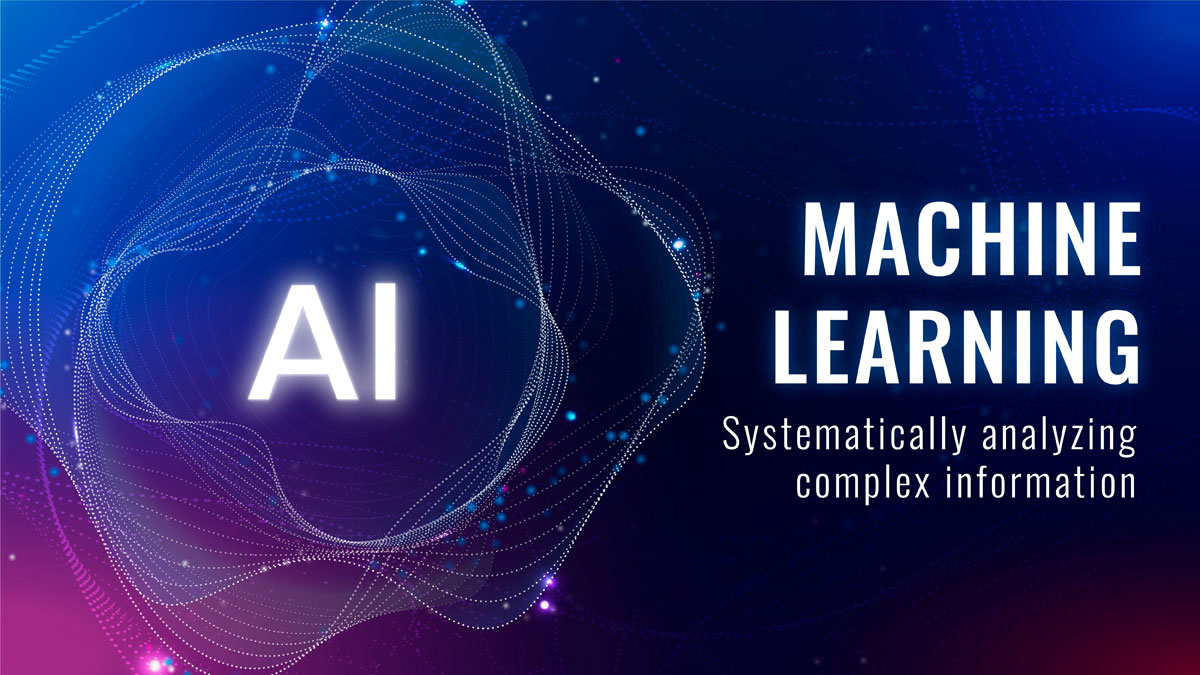Introduction
In today’s world, phrases like “artificial intelligence” and “machine learning” echo in every corner of the internet. It’s exciting, isn’t it? The idea of machines learning and improving almost like a human sounds like something out of a futuristic movie. But what does it truly mean? And how does it impact us as individuals?
Machine Learning (ML), for many, might seem like an intimidating concept reserved for tech geniuses. But here’s the reality: it’s simpler than you think. By the time you’re done reading this guide, you’ll not only understand the basics of What is Machine Learning but also see how it’s deeply woven into your everyday life.
A Warm Beginning: The Essence of Machine Learning
At its core, machine learning is a branch of artificial intelligence where computers learn from data and make decisions without being explicitly programmed. Think of it as teaching a young child who absorbs information, tries new things, and improves over time through experiences.
Remember when you first taught a toddler to recognize shapes or colors? You kept showing them objects, and slowly but surely, they learned. Similarly, machines analyze patterns in data to recognize trends, make predictions, and solve problems.
The Backbone of Machine Learning: Data, Algorithms, and Models
To understand machine learning more deeply, let’s break it into three simple pillars:
1. Data
Without data, machine learning wouldn’t exist. Data is like the fuel that powers the whole process. Imagine giving a machine thousands of photos of cats and dogs—this data helps it learn the difference between them.
2. Algorithms
An algorithm is essentially the recipe the machine follows to learn. Various algorithms exist, such as decision trees, neural networks, and clustering, all of which process the data differently.
3. Models
The final result of a machine learning process is the model. This model contains all the “knowledge” the machine has learned. For example, it can predict future outcomes or classify new data based on what it already knows.
Types of Machine Learning: A Quick Overview
There are three primary categories:
- Supervised Learning: The machine is trained using labeled data. Think of it as a teacher providing answers for guidance.
- Unsupervised Learning: Here, the machine explores data without prior instructions, grouping or sorting based on patterns.
- Reinforcement Learning: The system learns through a reward-based approach—much like training a pet with treats.
Where Do We See Machine Learning in Daily Life?
Whether you’re aware of it or not, machine learning surrounds you:
- Email Filters: Are those “spam” and “important” labels? Machine learning is at work.
- Streaming Services: Ever wondered how Netflix knows what you might enjoy next? That’s ML!
- Voice Assistants: Alexa, Google Assistant, or Siri rely heavily on machine learning.
The world around us is embracing this technology, not just for convenience but to solve critical problems.
5 Case Studies That Showcase Machine Learning in Action
1. Healthcare Breakthroughs
- Machine learning is revolutionizing diagnostics by predicting diseases with remarkable accuracy.
- A hospital in the U.S. used ML to anticipate patient deterioration, saving countless lives.
2. Environmental Conservation
- Researchers use ML to monitor endangered species populations.
- An ML-driven project analyzed ocean noise to protect whales from ship collisions.
3. Personalized Education
- Platforms like Duolingo adapt lessons based on student performance using ML.
4. E-Commerce Recommendations
- Amazon and Flipkart use ML to recommend products, increasing customer satisfaction.
5. Fraud Detection in Banking
- Banks have reduced fraudulent activities using machine learning models to detect unusual transactions.
My Personal Insights on Machine Learning
1. It’s a Gateway to Curiosity: Every time I learn about ML, I feel a renewed sense of wonder about how human ingenuity drives technological advancements.
2. A Love-Hate Relationship with Convenience: Machine learning makes life so seamless, but I can’t ignore its privacy implications. Balancing progress with ethics is critical.
3. The Human Element Matters: Machines might learn patterns, but it’s our emotional intelligence and creativity that add depth to the technology.
4. ML for Everyone: You don’t need a coding background to appreciate its applications. There are tools and platforms today that make ML accessible to everyone.
5. A Call to Action: More than ever, there’s a need for individuals to take an interest in these technologies—not just as consumers but as aware contributors.
Addressing Common Questions (FAQs)
1. Is machine learning the same as AI?
Machine learning is a subset of artificial intelligence, focusing on systems that learn and improve from data.
2. Do I need coding skills to learn ML?
While coding helps, platforms like Google’s Teachable Machine make it easier for beginners.
3. What are the risks of machine learning?
Concerns like bias, privacy issues, and job displacement often arise but can be mitigated with responsible practices.
4. Can small businesses use ML?
Absolutely! ML-powered tools like chatbots and data analytics are accessible to companies of all sizes.
5. Where should I start if I’m interested in learning ML?
Begin with beginner-friendly resources like Coursera or Kaggle for practical, hands-on experience.

Most impacted sectors by Machine Learning!
Machine learning has become a transformative force across numerous industries, fundamentally reshaping how businesses operate and innovate. Here are some of the most impacted sectors:
1. Healthcare
- Diagnostics and Predictions: ML models assist in detecting diseases like cancer, often outperforming traditional methods.
- Personalized Treatment: Algorithms analyze patient data to recommend tailored treatment plans.
- Drug Discovery: Machine learning accelerates the development of new drugs, reducing time and costs significantly.
2. Finance and Banking
- Fraud Detection: ML algorithms identify fraudulent activities in real-time, safeguarding assets.
- Risk Assessment: Banks leverage ML for credit scoring and financial risk analysis.
- Algorithmic Trading: Machine learning is used to predict stock price movements, making trading faster and more efficient.
3. Retail and E-Commerce
- Recommendation Systems: Platforms like Amazon utilize ML to recommend products based on user preferences.
- Inventory Management: Machine learning predicts demand, optimizing stock levels and supply chains.
- Customer Insights: Algorithms analyze buying behavior to personalize marketing strategies.
4. Transportation and Logistics
- Autonomous Vehicles: Self-driving cars, such as those developed by Tesla, rely heavily on ML.
- Route Optimization: Delivery services like FedEx and UPS use ML to determine the fastest and most efficient routes.
- Predictive Maintenance: ML predicts equipment failures, minimizing downtime and costs.
5. Energy
- Renewable Energy Optimization: Machine learning helps in managing renewable energy sources like wind and solar by predicting energy output.
- Grid Management: ML models balance supply and demand on electricity grids.
- Fault Detection: Early identification of faults in energy infrastructure enhances safety and efficiency.
6. Education
- Personalized Learning: Platforms adapt lessons and resources based on student progress.
- Automated Grading: Machine learning assists teachers by automating the grading process.
- Accessibility Tools: Speech-to-text and translation tools help students with diverse needs.
7. Entertainment
- Content Recommendations: Platforms like Netflix, YouTube, and Spotify use ML to offer personalized content suggestions.
- Game Design: In gaming, machine learning drives adaptive storylines and intelligent NPC behavior.
- Production Insights: ML predicts box office success or audience engagement for new releases.
8. Manufacturing
- Quality Control: ML systems identify defects in production processes with remarkable precision.
- Robotics: Industrial robots powered by ML adapt to different tasks on the fly.
- Demand Forecasting: Predicting market demands helps optimize production schedules.
9. Agriculture
- Crop Monitoring: ML analyzes satellite imagery to monitor crop health and predict yields.
- Precision Agriculture: Machines optimize water, pesticide, and fertilizer usage.
- Livestock Management: Algorithms monitor the health and productivity of livestock.
10. Telecommunications
- Network Optimization: ML ensures seamless connectivity by predicting network traffic and failures.
- Customer Service: Chatbots and virtual assistants resolve issues efficiently.
- Fraud Prevention: ML secures data by identifying unusual activities.
Emerging Impact Areas
While these industries are at the forefront, machine learning is also making waves in areas like legal services (document analysis), real estate (price predictions), and even environmental conservation (wildlife tracking).
The future of machine learning (ML)
The future of machine learning (ML) is brimming with exciting possibilities, as advancements in technology continue to push the boundaries of what machines can achieve. Here are some key trends shaping the future of ML applications:
1. Quantum Machine Learning
- Quantum computing is set to revolutionize ML by enabling faster data processing and solving complex problems that are currently beyond the reach of classical computers.
2. Edge Computing Integration
- ML models are increasingly being deployed on edge devices, allowing real-time analytics and decision-making without relying on cloud servers. This is particularly impactful for autonomous vehicles, IoT devices, and healthcare monitoring.
3. Explainable AI (XAI)
- As ML becomes more integrated into critical decision-making processes, the demand for transparency and interpretability is growing. XAI focuses on making ML models more understandable to humans, ensuring ethical and responsible use.
4. Federated Learning
- This decentralized approach to ML allows devices to collaboratively learn from shared data while keeping the data localized. It enhances privacy and security, making it ideal for industries like healthcare and finance.
5. Generative AI Evolution
- Generative models, such as those used in creating realistic images, videos, and text, are advancing rapidly. These models are redefining creativity and are being applied in fields like entertainment, design, and content creation.
6. AI-Augmented Software Development
- ML is being used to assist developers by automating code generation, debugging, and optimization. This trend is expected to accelerate software development cycles.
7. Reinforcement Learning in Real-World Applications
- Reinforcement learning, which focuses on training models through trial and error, is finding applications in robotics, autonomous systems, and game development.
8. Personalized AI Experiences
- ML is driving hyper-personalization in industries like retail, education, and healthcare, offering tailored experiences based on individual preferences and behaviors.
9. Sustainability and Environmental Applications
- ML is being leveraged to address environmental challenges, such as optimizing renewable energy sources, monitoring deforestation, and predicting climate patterns.
10. Integration with IoT
- The combination of ML and IoT is enabling smarter devices and systems, from smart homes to industrial automation. This integration is enhancing efficiency and connectivity.
These trends highlight the transformative potential of machine learning across various domains. Which of these trends excites you the most? Let’s explore it further!
The challenges facing Machine Learning development
Machine learning (ML) is a transformative technology, but its development faces several challenges that range from technical hurdles to ethical considerations. Let’s delve into some of the key issues:
1. Data Challenges
- Data Quality: ML models depend on large volumes of high-quality data. Poorly labeled, incomplete, or noisy datasets can compromise the accuracy of models.
- Data Privacy: Ensuring privacy in the use of personal or sensitive data is a significant concern, especially with regulations like GDPR in place.
- Data Bias: Training data often contains biases that can lead to unfair or discriminatory outcomes in ML applications.
2. Computational Costs
- ML requires substantial computational power, especially for training complex models like neural networks. Access to high-performance hardware (e.g., GPUs and TPUs) can be expensive and energy-intensive.
3. Algorithm Transparency
- Many ML models, especially deep learning models, function as “black boxes,” meaning their decision-making processes are not easily interpretable. This lack of transparency raises trust and ethical concerns.
4. Scalability
- While creating a working ML model is one thing, scaling it to handle real-world data and applications poses challenges, particularly in distributed systems.
5. Generalization
- Models trained on specific datasets often struggle to generalize effectively to new, unseen data, limiting their adaptability.
6. Ethical and Social Concerns
- Bias and Fairness: Bias in ML models can perpetuate stereotypes or inequality.
- Accountability: Determining who is responsible when ML systems make harmful mistakes is a critical issue.
- Job Displacement: Automation through ML may replace jobs, leading to economic and social concerns.
7. Security Risks
- ML systems are susceptible to adversarial attacks, where maliciously crafted inputs deceive the models.
- Data poisoning, where attackers manipulate training data, can compromise the model’s reliability.
8. Talent Gap
- Developing ML applications requires specialized skills, and there is a shortage of qualified professionals in this field.
9. Ethical Deployment
- Deploying ML applications responsibly, especially in sensitive fields like healthcare and criminal justice, requires robust ethical frameworks and safeguards.
10. Sustainability
- The energy consumption of training large-scale ML models raises environmental concerns. Striking a balance between performance and sustainability is an ongoing challenge.
Navigating the Path Forward
While these challenges are significant, ongoing research, innovation, and collaboration between governments, academia, and industry players are gradually addressing them. Which of these challenges intrigues or concerns you the most? I’d be happy to explore it with you further!
Trusted Resources for Further Reading
To dive deeper into machine learning, here are some official resources:
- Google AI Blog
- Machine Learning on Microsoft Azure
- Coursera ML Specialization
- OpenAI Blog
- Kaggle’s Learning Platform
Conclusion
Machine learning is an extraordinary field that continues to evolve and shape our world, but it’s not without its challenges. From data quality and privacy concerns to computational costs and ethical dilemmas, the journey of ML development demands both innovation and accountability. As we look to the future, solutions like improving data handling, enhancing transparency, adopting energy-efficient models, and fostering interdisciplinary collaboration are paving the way for responsible and sustainable growth in machine learning.
At its core, machine learning represents the human desire to understand, innovate, and improve. The fusion of technology and human values is what will determine its impact on our society. By navigating these challenges thoughtfully and leveraging solutions proactively, we can ensure ML serves as a force for good, driving progress across industries while keeping humanity at the heart of innovation. As this field grows, each of us has a role to play—whether as developers, businesses, policymakers, or simply as informed citizens—in shaping the future of machine learning for the better.
Top Big Data Analytics Tools in 2025
How to Become a Data Scientist in 2025: A Step-by-Step Guide!










GetResponse is a game-changer for email marketing! It offers powerful automation, user-friendly tools, and excellent deliverability—making campaigns seamless and effective. Plus, their analytics help optimize performance effortlessly. Great news! Now you can get 30% off until April 5th. Perfect time to upgrade or try it out! 🚀 Follow the link.